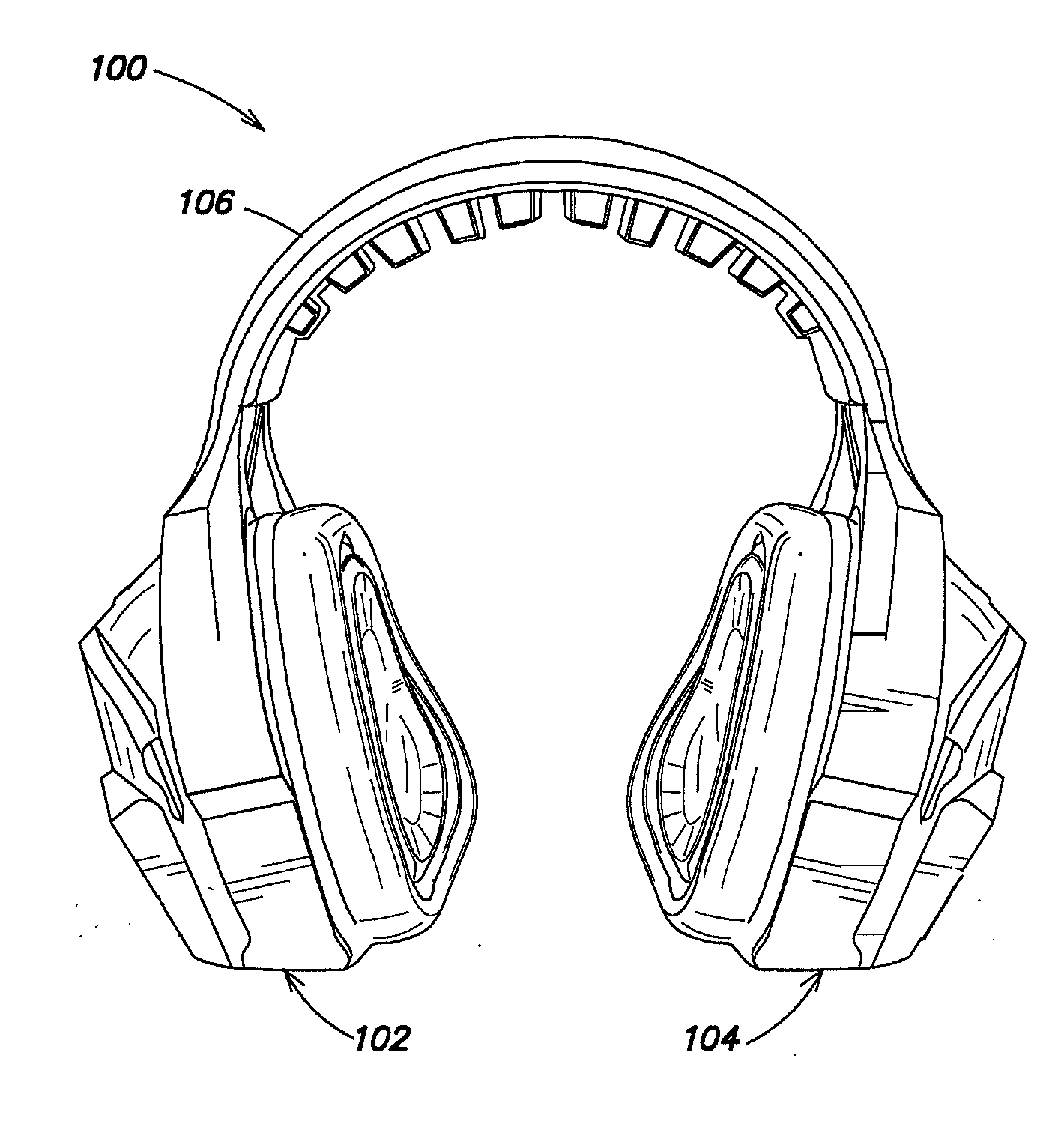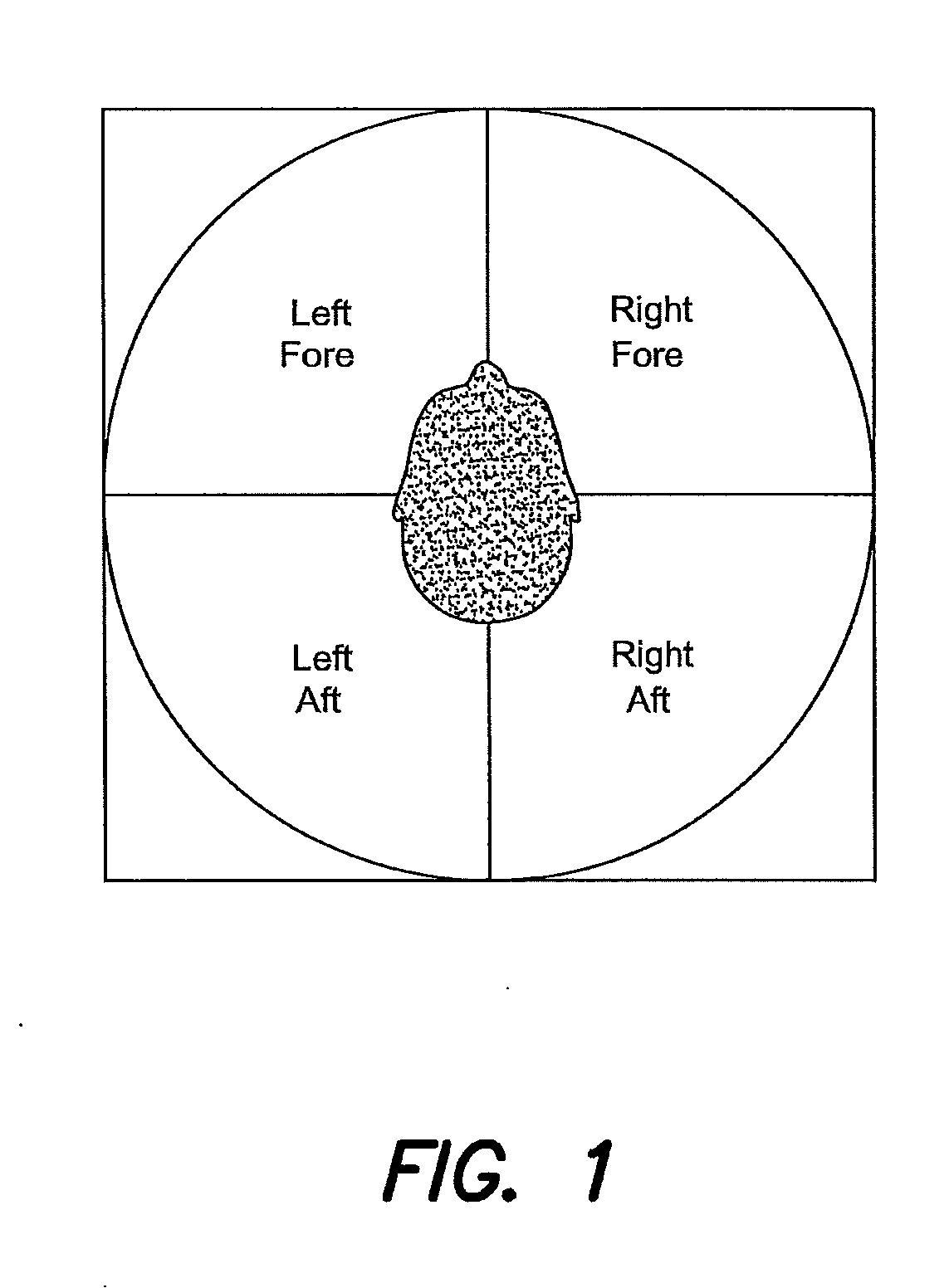Electronic hearing protector with quadrant sound localization
a quadrant sound and hearing protection technology, applied in the field of electro-optical hearing protection, can solve the problems of insufficient duplex theory for front-to-back sound localization, inability to recreate the correct spatial sensation for a different listener, and similar ambiguity, and achieve the effect of facilitating sound localization
- Summary
- Abstract
- Description
- Claims
- Application Information
AI Technical Summary
Benefits of technology
Problems solved by technology
Method used
Image
Examples
Embodiment Construction
[0036]FIGS. 8A and 8B are perspective pictorial illustrations of an electronic hearing protector / headset 100, which includes a first ear cup assembly 102, a second ear cup assembly 104 and a head band 106 that interconnects the first and second ear cup assemblies 102, 104. The first ear cup assembly 102 includes a first front microphone assembly 107 and a first rear microphone assembly 108. The second ear cup assembly 104 includes a second front microphone assembly and a second rear microphone assembly (not shown). Each of the microphone assemblies may include an array microphone comprising a plurality of omnidirectional microphones. Alternatively, directional microphones may also be used.
[0037]FIG. 9 is a block diagram illustration of signal processing 110 associated with at least one of the ear cup assemblies 102, 104 (FIGS. 8A and 8B). The front microphone assembly provides a front microphone signal on a line 112 and the rear microphone assembly provides a rear microphone signal ...
PUM
 Login to View More
Login to View More Abstract
Description
Claims
Application Information
 Login to View More
Login to View More - R&D
- Intellectual Property
- Life Sciences
- Materials
- Tech Scout
- Unparalleled Data Quality
- Higher Quality Content
- 60% Fewer Hallucinations
Browse by: Latest US Patents, China's latest patents, Technical Efficacy Thesaurus, Application Domain, Technology Topic, Popular Technical Reports.
© 2025 PatSnap. All rights reserved.Legal|Privacy policy|Modern Slavery Act Transparency Statement|Sitemap|About US| Contact US: help@patsnap.com



